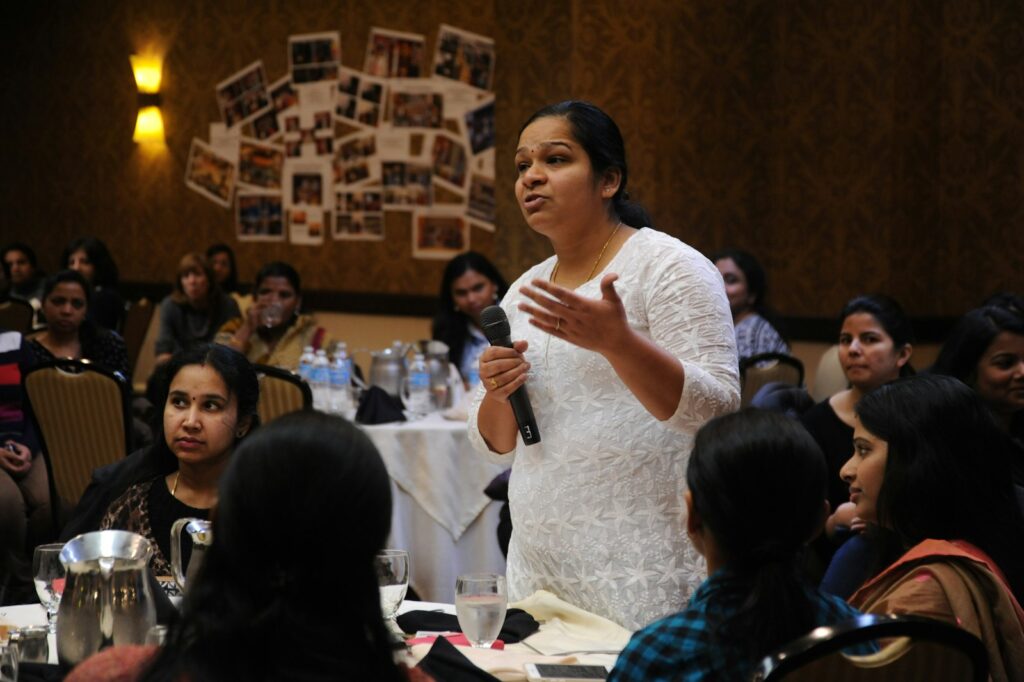The world of language, much like the world of technology, thrives on precision. Just as you wouldn’t settle for a gadget that’s “almost” functional or a service that delivers “most” of what you need, your communication deserves the same clarity and accuracy. In an era where information overload is the norm, mastering the subtle yet powerful distinctions of frequently used words can significantly elevate your message, ensuring it performs optimally and delivers maximum value.
One such word, often used and sometimes misused, is “most”—along with its close relatives. This unassuming term carries a surprising weight of grammatical nuances, each designed to convey a precise shade of meaning. Failing to understand these distinctions can lead to misinterpretations, diluted impact, or simply less effective communication. This comprehensive guide, crafted with a CNET-style focus on clarity, utility, and actionable insights, aims to dissect these linguistic “features” so you can deploy them with confidence and achieve peak communication performance.
We’re embarking on an in-depth exploration of the various facets of “most,” breaking down its roles as a determiner, adverb, pronoun, and noun, and drawing clear lines between it and similar expressions like “most of,” “the most,” “almost,” and “almost all.” Think of this as your essential user manual for maximizing linguistic efficiency. By the end of this journey, you’ll be equipped with the knowledge to select the optimal form for any given scenario, ensuring your words resonate with the exact intent you desire, delivering unparalleled clarity and precision in every interaction.

1. **Understanding “Most”: The General Majority**When you aim to speak about a majority without pointing to a specific, identifiable group, the simple use of “most” acts as your go-to determiner. It signifies “more than half of a general group,” allowing for broad statements that are widely applicable and easily understood. This form is inherently designed for broad strokes, highlighting a general trend or preference without delving into the specifics of who or what constitutes that majority. It’s a fundamental building block for general observations.
The key to its effective deployment lies in its directness: you simply pair “most” with a plural noun. Crucially, you should avoid using articles like “the” or possessive determiners like “my” or “these” immediately after “most” in this context. Doing so would shift its meaning, often leading to grammatical inaccuracies or, at the very least, a less precise expression of your intended message. This straightforward construction ensures that your statement remains general, encompassing a wider, undefined segment of a larger population or category.
Consider the examples provided in our reference: “Most people like music” and “Most children love ice cream.” These statements aren’t referring to “most *of* these specific people” or “most *of* my children.” Instead, they convey a universally accepted observation about a large, unspecified segment of humanity or childhood. This makes “most” incredibly useful for making generalizations that are widely understood and relatable, setting the stage for more nuanced discussions or simply conveying common knowledge with efficiency and impact. It’s the linguistic equivalent of a wide-angle lens, capturing the broader picture.
Read more about: Navigating the Concrete Jungle: The Top 2025 Cars Engineered for Effortless Urban Parking

2. **Unlocking “Most of”: Precision with Specific Groups**In contrast to the general nature of “most,” the phrase “most of” is employed when your intention is to refer to a majority within a clearly defined, specific group. This could be a group you’ve already mentioned, a group that’s understood from the context, or one that is qualified by a possessive or a determiner. This subtle addition of “of” transforms the scope from a broad generalization to a focused statement, allowing for a higher degree of precision and context-specific relevance. It’s about segmenting your data for a more granular analysis.
To use “most of” effectively, you’ll find it pairs naturally with definite articles, possessive pronouns, demonstratives, or other pronouns that specify the group in question. The structure typically follows “most of + the / my / your / these / them / us / noun or pronoun.” This ensures that the listener or reader understands exactly which collective you are quantifying. This specificity is crucial in scenarios where ambiguity could lead to misunderstanding or where the context of the group is paramount to the information being conveyed.
Our reference materials illustrate this distinction beautifully. “Most of my friends live in Canada” clearly refers to the speaker’s specific circle of friends, not friends in general. Similarly, “Most of them were tired” refers to an already identified group of individuals (“them”) who exhibited a particular state. And “I finished most of the book last night” specifies a particular book that was the object of the activity. This targeted application of “most of” allows for communication that is not only accurate but also highly contextual, providing valuable details that general statements would omit. It’s the zoom lens of linguistic precision.
Read more about: Unlock a Healthier Future: Your Essential Guide to Low-Impact Exercises for Joint Health Over 60

3. **Harnessing “The Most”: Expressing Superlative Degree**When the goal is to denote the absolute pinnacle of quantity, amount, or degree—the highest possible—”the most” becomes your indispensable tool. This superlative construction is used for direct comparison, setting something apart as unparalleled within its category. It’s a powerful way to highlight extremes, whether you’re describing exceptional talent, formidable challenges, or remarkable achievements. Think of it as delivering the ultimate performance metric.
The application of “the most” is straightforward yet versatile. It primarily functions in two distinct ways. First, it combines with long adjectives (those typically of two or more syllables, like “important,” “beautiful,” or “difficult”) to form the superlative degree. Here, “the most” precedes the adjective, elevating it to the highest possible descriptive level. Second, when you want to express the greatest quantity or frequency of an action, “the most” can follow a verb, emphasizing the extent of that action. Both usages serve to establish a clear, unequivocal benchmark.
Take, for instance, the examples from the context: “This is the most difficult question” leaves no room for doubt about the question’s challenge level—it surpasses all others. Similarly, “She is the most talented singer” unequivocally positions her at the apex of vocal ability within the group being considered. In an educational setting, “I study the most in my class” precisely conveys the speaker’s unmatched dedication to study compared to their peers. These instances underscore how “the most” effectively communicates the highest echelon of a characteristic or action, providing definitive comparative insights. It’s about setting records, not just making observations.
Read more about: Mastering the ‘Worst’: Your Ultimate Guide to Precision and Power in English Grammar

4. **Grasping “Almost”: Proximity Without Completion**”Almost” is a crucial adverb that allows us to convey a state of near completion or close proximity to an action, quality, or quantity, without actually reaching 100%. It’s about signaling that something is on the verge of happening, existing, or being a certain amount, but has not yet fully materialized. This distinction is vital for accuracy, as it manages expectations and provides a precise understanding of a situation that is in progress or narrowly avoided. It’s the diagnostic tool that tells you you’re nearly there, but not quite.
The versatility of “almost” is evident in its ability to modify various parts of speech. It can precede verbs, adjectives, numbers, and even the quantifier “all,” making it a highly adaptable word in English communication. This broad applicability allows for nuanced expressions across a wide range of contexts, from describing physical actions to quantifying abstract states or numerical values. It functions as a precise indicator of proximity, preventing the listener from assuming full completion or absolute certainty.
Consider the clarity offered by the provided examples. “I almost dropped my phone” vividly communicates that the speaker came perilously close to dropping it, but ultimately did not—a narrow escape. “She’s almost ready to go” informs us that preparation is nearly complete, but a final touch or two might still be required before departure. And “There were almost 100 people at the party” suggests the attendance was very high, perhaps 95 or 99, but fell just short of the round figure. Each instance uses “almost” to paint a picture of nearing a state without fully achieving it, a key precision for any detailed report.
Read more about: Beyond the Veil of ‘Most’: The Linguistic Twist Viewers Are Calling the Most ‘Disturbing’ Ever
5. **Distinguishing “Almost All”: Stronger Than “Most”**While “most” generally refers to “more than half,” and “most of” refers to “more than half of a specific group,” the phrase “almost all” takes us significantly closer to absolute totality. It functions as a stronger quantifier, indicating that nearly every single member or every single part of a group or category is involved, pushing the percentage much closer to 100%. This subtle yet impactful difference is crucial for conveying a sense of near-completeness that “most” alone might not fully capture, providing a higher fidelity representation of quantity.
“Almost all” can be deployed in a manner similar to “most” or “most of,” depending on whether you’re referring to a general or a specific group. For general groups, you might say “almost all cats,” implying a vast majority of the feline species. When addressing a specific, identifiable group, you would use “almost all of” followed by a determiner or pronoun, such as “almost all of my friends.” This flexibility allows you to maintain precision while escalating the intensity of your quantification, signaling a near-universal consensus or presence.
The impact of “almost all” is clearly demonstrated in the contextual examples. “Almost all cats dislike water” conveys a very high prevalence of this aversion among cats, implying that only a tiny fraction might tolerate or enjoy water. “Almost all of the kids were surprised” points to a near-unanimous reaction within a particular group of children. Furthermore, “Almost all of my students passed the test” provides a highly positive assessment of academic performance, suggesting an overwhelmingly successful outcome. These examples show how “almost all” provides a robust, high-confidence assessment of quantity, leaving very little room for exceptions and enhancing the reliability of your data.

6. **”Most” as Superlative of “Much”: Quantifying Uncountable Nouns**Moving beyond its role in general quantification, “most” also serves a vital function as the superlative degree of “much.” This specific application is reserved for situations involving uncountable nouns—those referring to abstract concepts, substances, or collections that cannot be individually counted. When you need to express the greatest quantity of such a noun, “most” steps in to articulate that ultimate measure, providing a clear top-tier metric in your linguistic assessments. It’s the ultimate gauge for continuous measurements.
The grammatical rules for this usage are precise. As the superlative of “much,” “most” will precede the uncountable noun it modifies, indicating that the amount in question surpasses all others. It’s important to remember that “much” itself deals with quantity rather than number, setting the stage for “most” to convey the maximal quantity. This distinct function helps maintain clarity between discrete items and continuous substances or concepts, ensuring your communication aligns with established linguistic standards.
The context provides excellent illustrations of this principle. “The teams competed to see who could collect (the) most money” demonstrates “money” as an uncountable noun, with “most” indicating the largest accumulated quantity. Similarly, “I spent most time in Rome” uses “most” to signify the greatest duration of “time” (an uncountable concept) allocated to a specific location. These examples highlight how “most,” as the superlative of “much,” is indispensable for accurately expressing maximal quantities of non-discrete entities, enabling precise data reporting in your discourse.
Read more about: Unpacking ‘Most’: The Word That Defines TV’s Biggest Ending Controversies (And What It Really Means)

7. **”Most” as Superlative of “Many”: Quantifying Countable Nouns**Complementing its role with uncountable nouns, “most” also functions as the superlative degree of “many,” specifically when referring to countable nouns. This usage is paramount when you’re dealing with discrete items or individual entities that can be enumerated. Here, “most” indicates the highest number of such items, establishing a definitive numerical maximum within a given context. It’s the ultimate counter for discrete units, ensuring your numerical reporting is absolute and unambiguous.
The deployment of “most” as the superlative of “many” follows a clear grammatical pattern: it precedes the countable plural noun, signifying the greatest numerical count. This distinction between “most” (from “much”) for quantity and “most” (from “many”) for number is fundamental for maintaining grammatical accuracy and ensuring that your quantitative statements are interpreted correctly. It’s about providing the right statistical lens for your data points.
The contextual examples perfectly capture this use. “The team with the most points wins” clearly refers to the highest count of individual “points” (a countable noun) accumulated by a team. Another example, “Most bakers and dairy farmers have to get up early,” uses “most” to denote the largest number of individuals within these professions who adhere to early rising, implicitly conveying a general observation without a specific article. These instances underscore how “most,” as the superlative of “many,” is crucial for precise numerical communication, allowing you to articulate maximum counts with utmost clarity and authority.
Navigating the intricacies of language requires an understanding of how words shift roles, adapting to different communicative needs. Just as a versatile piece of technology can perform multiple functions, the word “most” transcends its primary quantifier duties, taking on diverse roles as an adverb, pronoun, and noun, each with unique implications. This section delves into these multifaceted applications, ensuring you can deploy “most” with the precision of a seasoned linguistic engineer, optimizing your communication for every conceivable scenario.
From expressing intensity to identifying a collective group or even quantifying record-setting achievements, “most” proves to be an indispensable component of the English lexicon. We’ll also examine its informal uses, its contribution to creating compound superlatives, and clarify its relationship with its comparative counterpart, “more.” This comprehensive exploration aims to equip you with an advanced understanding, transforming your linguistic interactions into finely tuned instruments of clarity and impact.
Read more about: Unpacking ‘Most’: The Word That Defines TV’s Biggest Ending Controversies (And What It Really Means)

8. **Adverbial “Most” – Expressing “Very” or “Highly”**Beyond its function in forming superlatives with long adjectives (as in “the most difficult”), “most” can also operate independently as an adverb to convey a sense of ‘very’ or ‘highly.’ This usage adds an emphatic quality to adjectives and adverbs, elevating the degree of the characteristic being described without implying a comparison to all others. It’s a subtle yet powerful way to intensify your message, making a statement more impactful.
This application is often found in more formal or literary contexts, lending a refined air to the expression. When “most” is used in this manner, it precedes an adjective or adverb, much like “very” would, but it often carries a slightly stronger or more distinguished connotation. It allows you to emphasize the exceptional nature of something, signaling that it possesses a quality to a significant, often remarkable, extent.
Consider the examples where this adverbial “most” is at play: “This is a most unusual specimen” or “Most cruel edict!” In these instances, “most” doesn’t suggest that the specimen is the *most* unusual of all specimens, or the edict is the *most* cruel of all edicts. Instead, it signifies that the specimen is “very” or “highly” unusual, and the edict is “very” or “extremely” cruel. This usage allows for nuanced expressions of intensity, providing a precise tool for descriptive language.
Read more about: From Bad to Worse (or is it Worst?): Unpacking the Ultimate Grammar Showdown

9. **Pronoun “Most” – Referring to the Majority**”Most” can also stand alone as a pronoun, effectively replacing a noun phrase when the context makes the group being referred to clear. In this capacity, it signifies “the greater part of a group,” particularly when that group consists of people. This linguistic shortcut streamlines sentences, avoiding repetition and maintaining a fluid conversational or writing style, while still conveying accurate quantitative information.
When functioning as a pronoun, “most” inherently implies a reference to a collective that has either been previously mentioned or is readily understood from the surrounding conversation. It is an efficient way to summarize the sentiment or action of a large segment of a population or a specific set of entities. This makes it a valuable tool for expressing general consensus or widespread behavior within a discernible context.
For instance, the statement “Most want the best for their children” uses “most” as a pronoun, clearly referring to “most people” or “most parents.” Similarly, “The peach was juicier and more flavourful than most” uses “most” to represent “most other peaches.” This pronominal use underscores its versatility, allowing it to function both as a stand-in for specific groups and as a general reference to a majority, enhancing conciseness and clarity in communication.
Read more about: A Money Pit in Every Drive: 14 Pickup Trucks and the Hidden Pitfalls Owners Regret Most

10. **Noun “Most” – Quantifying Maximums (Uncountable)**Shifting gears, “most” also takes on the role of a noun, specifically to denote the greatest quantity, amount, or degree of something. This usage is particularly evident when referring to uncountable nouns, which represent things that cannot be counted individually but are measured in bulk or extent. As a noun, “most” acts as a direct indicator of the ultimate limit or the peak of a particular measure.
When employed in this manner, “most” often appears with the definite article “the,” forming the phrase “the most.” This construction definitively establishes a ceiling or a maximum, making it an essential term for setting boundaries or articulating limits in various contexts, from financial negotiations to personal aspirations. It provides a clear, unambiguous benchmark for measurement.
Consider the practical application: “The most I can offer for the house is $150,000.” Here, “the most” clearly defines the absolute maximum financial commitment. Similarly, if someone states, “The most this room will seat is 150,” they are setting a definitive capacity limit. This noun form of “most” is invaluable for precise communication regarding quantitative boundaries and ultimate measures, ensuring that expectations are clearly set and understood.

11. **Noun “Most” – Quantifying Maximums (Countable / Part of a Group)**Expanding on its noun function, “most” can also refer to the greatest number or the greater part of what is specified, even when dealing with countable entities or as a representation of a significant portion of a group. This usage allows “most” to function as a substantive, encapsulating the idea of a majority within a collective, whether that collective is implicitly or explicitly defined.
This form is particularly useful when you want to refer to the bulk of something or someone without explicitly repeating the noun. It often appears in conjunction with “of” and a pronoun or a plural noun to specify the group in question. This construction makes it an effective device for referring to a predominant segment of a larger whole, streamlining complex quantitative descriptions.
Illustrative examples from the context clarify this role: “Most of his writing is rubbish.” Here, “most” (as a noun, with “of his writing” specifying the group) refers to the greater part of his collected works. Another instance, “Most of the penguins were friendly and curious,” employs “most” to highlight that the majority of a specific group of penguins exhibited certain traits. This function of “most” as a noun helps to succinctly convey a dominant proportion or number within a given set.
12. **Noun “Most” – Denoting Record-Setting Amounts (“Mosts”)**In a more specialized and often countable context, “most” can also be used as a noun in its plural form, “mosts,” to refer to record-setting amounts or achievements. This usage elevates “most” from a simple quantifier to a descriptor of unparalleled excellence or highest attainment within a category. It’s a dynamic term for celebrating extremes and benchmarking superior performance.
This particular application is frequently encountered in sports, business, or any field where records and superlative achievements are meticulously tracked and celebrated. The plural “mosts” signals a collection of instances where the highest possible quantity or degree was reached, denoting a series of top-tier accomplishments. This makes it an impactful way to acknowledge and quantify extraordinary success.
For example, the context mentions, “Along with their massive size will come other ‘mosts’: they will likely be the longest living, the best educated, the wealthiest and the most wired/wireless.” This sentence effectively uses “mosts” to list several areas where a group is expected to achieve unparalleled levels. Similarly, in the phrase, “his list of ‘firsts’ and ‘mosts’ is probably without parallel in music and entertainment history,” “mosts” collectively refers to numerous highest achievements. This compelling usage underscores the remarkable impact of ultimate success.

13. **”Most” vs. “More” – Understanding Comparative and Superlative Degrees**To fully master “most,” it’s crucial to understand its relationship with its comparative counterpart, “more.” Both words are derived from “much” and “many,” but they serve distinct functions in expressing degrees of quantity or extent. “More” is used for comparing two items or groups, indicating a greater quantity or degree between them, while “most” is reserved for comparisons among three or more items, signifying the absolute greatest quantity or degree.
Think of “more” as the intermediary step in a progression. When you compare two things, one has “more” of a quality than the other. For instance, “She has more books than he does” compares the quantity of books between two individuals. “More” allows for a direct, pairwise comparison, highlighting an incremental increase.
In contrast, “most” represents the apex of that progression, the superlative degree. It identifies the single item or group that surpasses all others in a given quality or quantity. For example, “She has the most books in her class” establishes her as having a higher number of books than any other student in that defined group. Understanding this clear distinction—”more” for two, “most” for three or more—is paramount for accurate comparative statements, ensuring your language reflects precise quantitative analysis.
Read more about: Navigating the Nuances: 11 Critical Distinctions Between ‘Worse’ and ‘Worst’ for Accurate Health Understanding
As we conclude this comprehensive exploration of “most” and its linguistic relatives, it’s evident that precision in language is as vital as precision in technology. Just as CNET strives to offer clear, data-driven insights to empower consumers, this guide has aimed to demystify the nuances of “most,” transforming it from a potentially ambiguous term into a versatile instrument for communication. By understanding its roles as a general determiner, a specific quantifier, a superlative, an adverb of intensity or approximation, a pronoun, a noun, and a component in compound words, you are now equipped to navigate its complexities with confidence. May your linguistic endeavors always be clear, impactful, and precisely tailored to your communicative goals, maximizing the value of every word you choose.







